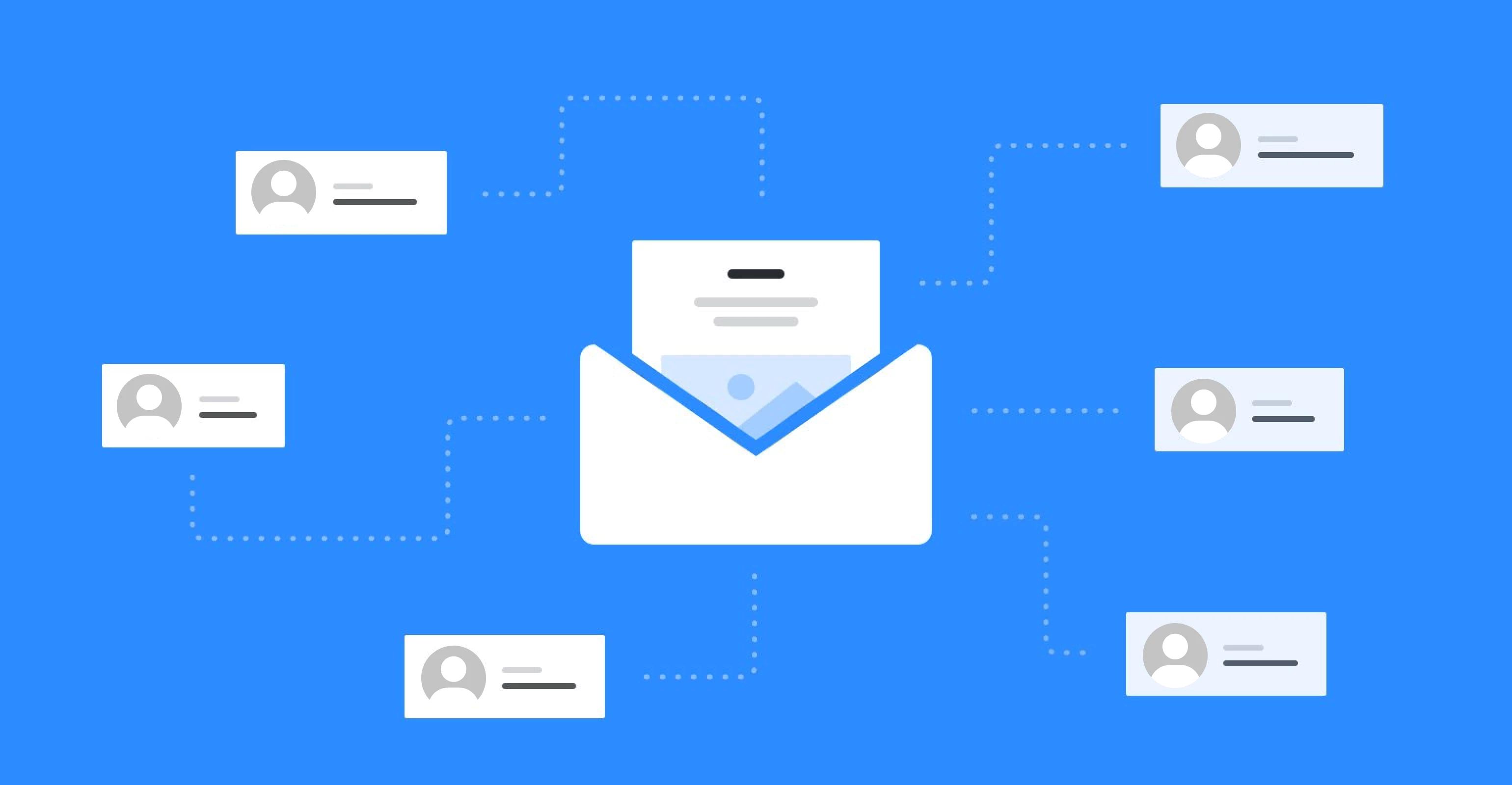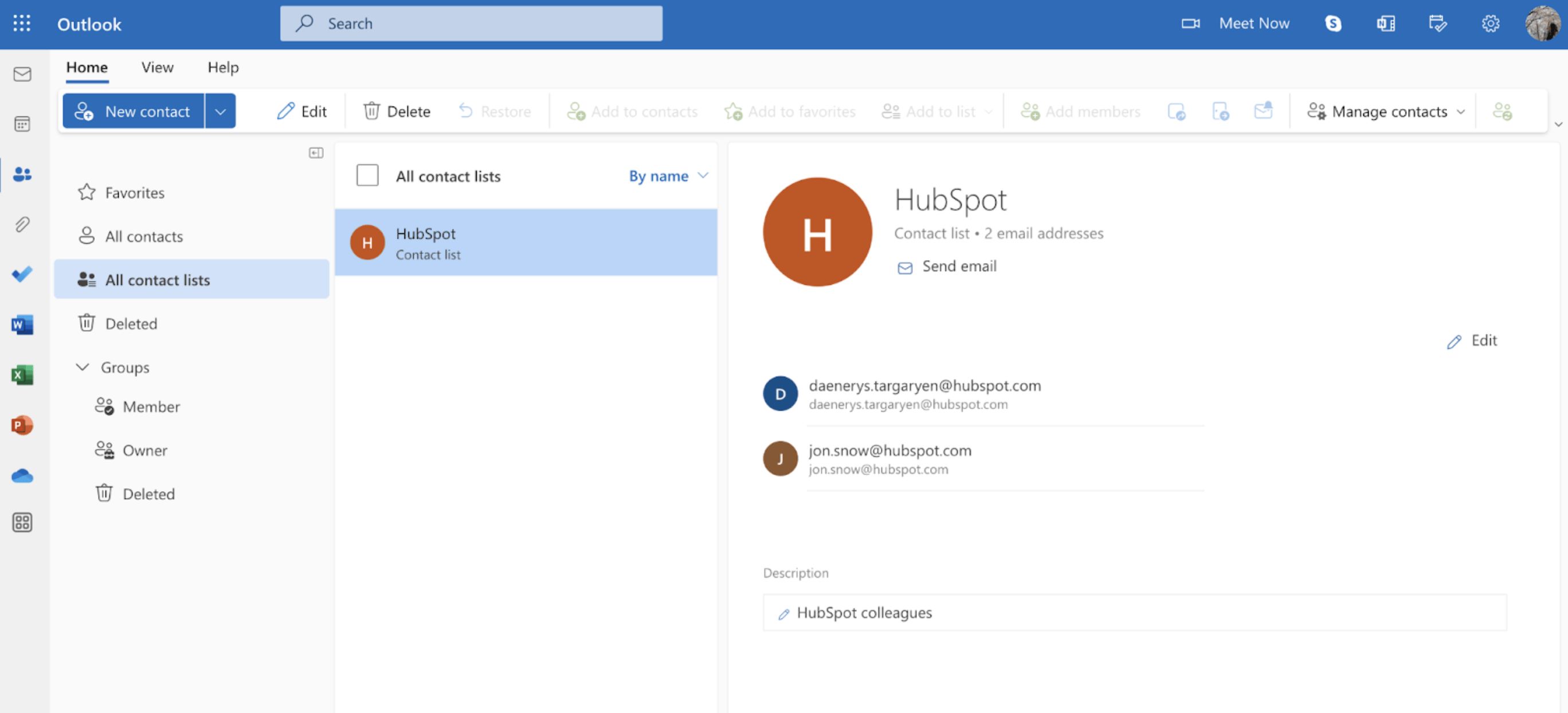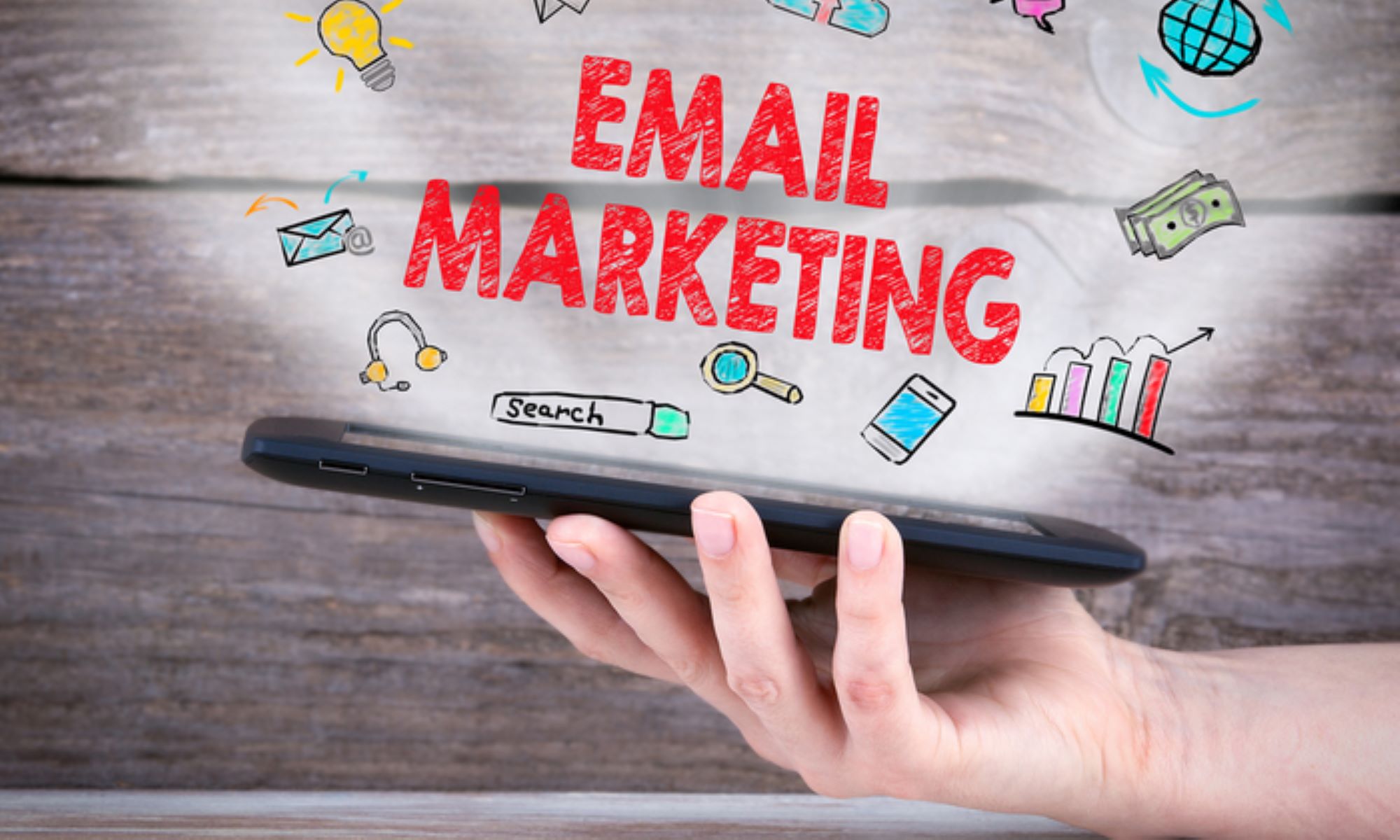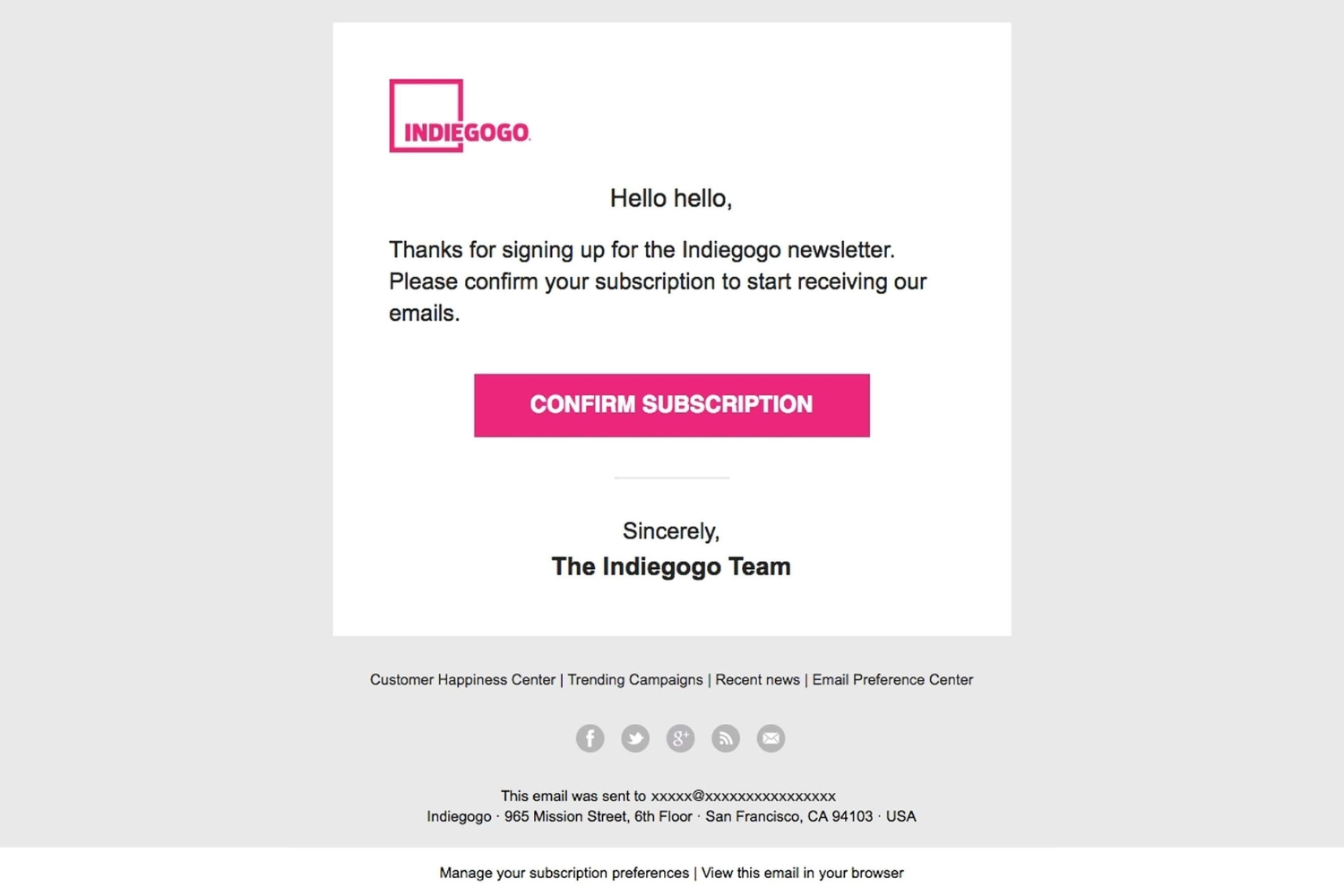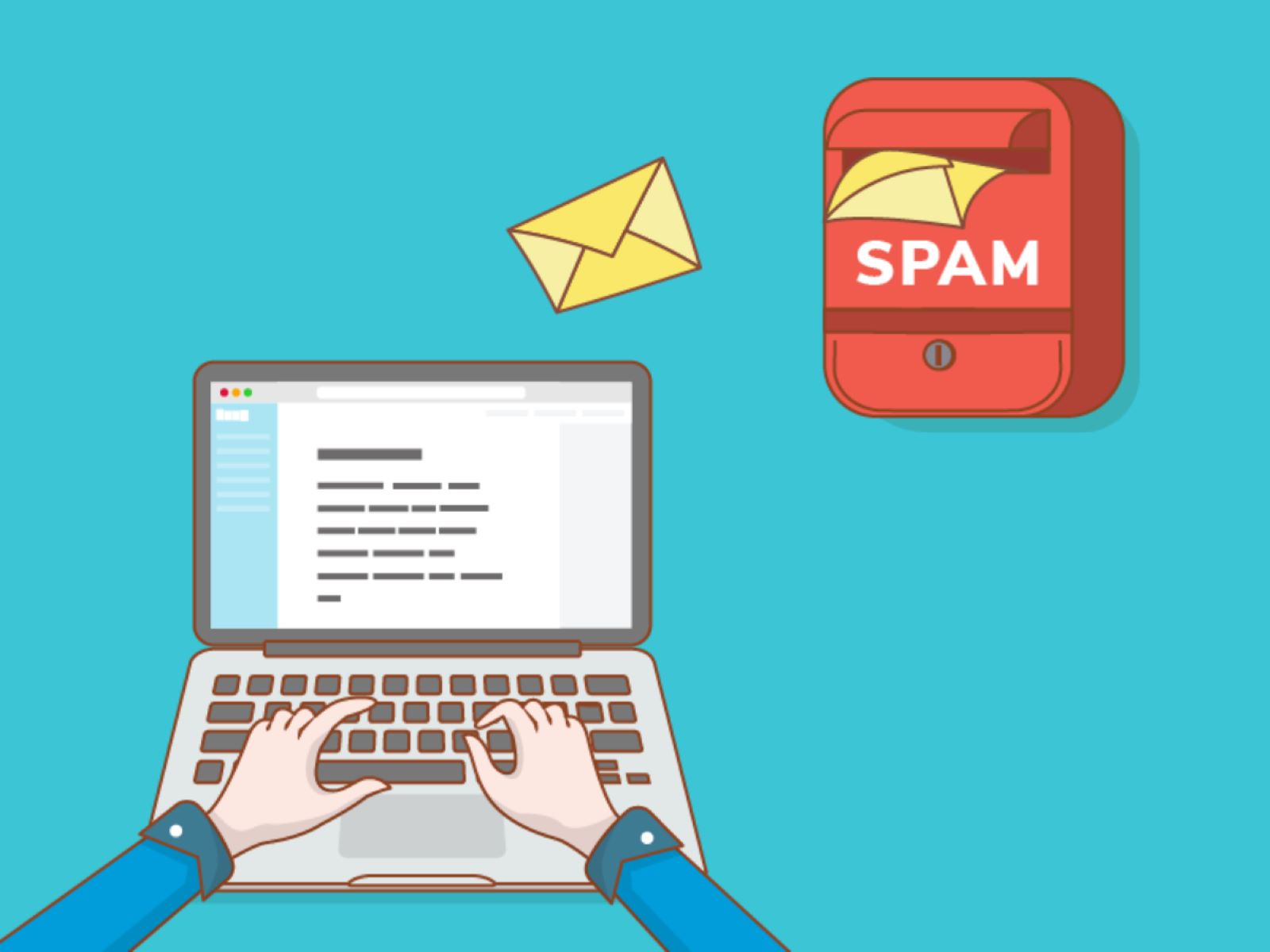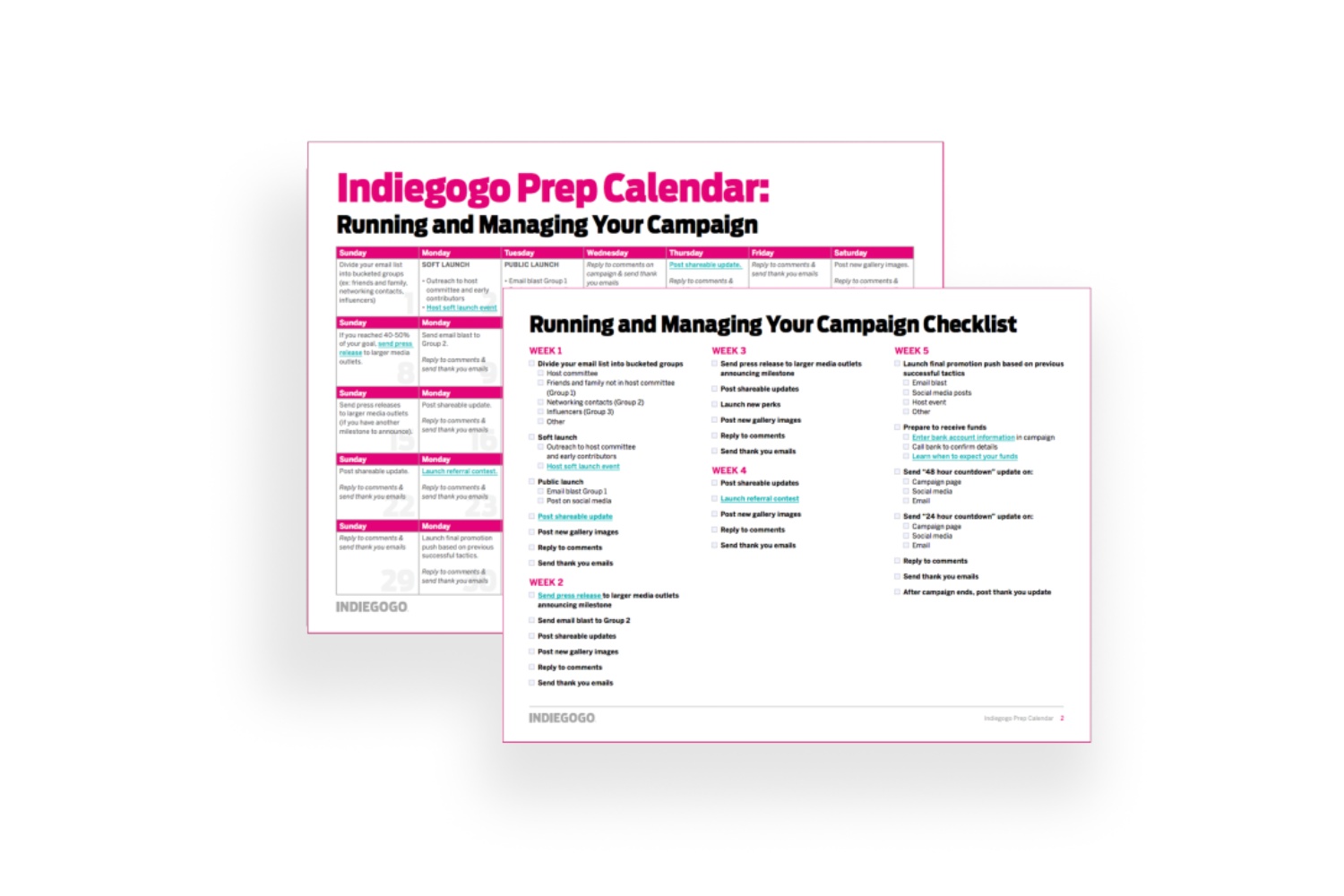Introduction
Welcome to this comprehensive guide on how to build an email list. In today’s digital age, email marketing continues to be one of the most effective and powerful methods for reaching and engaging with your audience. Whether you are a small business owner, a blogger, or an entrepreneur, building an email list is essential for your online success.
An email list is a collection of email addresses of individuals who have voluntarily subscribed to receive updates, promotions, and valuable content from you or your business. These subscribers have expressed an interest in what you have to offer, and being able to communicate directly with them through their inbox gives you a unique opportunity to nurture relationships, boost brand loyalty, and drive conversions.
But why is building an email list so important? Think of it this way: social media platforms and search engines are constantly evolving, algorithms change, and trends come and go. However, email remains a steadfast communication channel that you have control over. With an email list, you have a direct line of communication with your audience, regardless of any changes happening in the digital landscape.
By leveraging the power of email marketing, you can deliver personalized and targeted messages directly to your subscribers, increase website traffic, promote new products or services, generate leads, and drive revenue for your business. It is a cost-effective and efficient way to stay connected with your audience and build long-term relationships.
Throughout this guide, we will explore the best strategies and techniques to successfully build and grow your email list. From setting goals and identifying your target audience to creating an opt-in incentive and utilizing various marketing channels, we will cover it all. So let’s dive in and start building a valuable and engaged email list that will propel your business forward.
Why Building an Email List is Important
Building an email list is an essential component of a successful digital marketing strategy. It offers numerous benefits and advantages that can help your business flourish. Let’s explore why building an email list is so important:
- Direct communication with your audience: With an email list, you have a direct and personal way to communicate with your audience. Unlike social media or search engine algorithms, which may restrict your reach, email allows you to deliver messages directly to your subscribers’ inboxes.
- Increase website traffic: By sending regular emails with valuable content, promotions, and updates, you can drive traffic to your website. This increased traffic provides opportunities for engagement, conversion, and ultimately, growth for your business.
- Promote products and services: An email list gives you a platform to promote your products or services directly to your subscribers. You can showcase new offerings, highlight features and benefits, and include exclusive discounts or deals to encourage purchases.
- Build trust and credibility: By consistently delivering valuable content, insights, and solutions to your subscribers’ problems, you establish yourself as an authority in your industry. This builds trust and credibility, making your audience more likely to engage with and purchase from your business.
- Generate leads and conversions: An email list provides a pool of potential leads that have already expressed an interest in your business. By nurturing these leads through targeted email campaigns, you can guide them through the sales funnel and convert them into paying customers.
- Segmentation and personalization: With an email list, you can segment your subscribers based on their interests, demographics, and buying behavior. This allows you to create personalized and targeted email campaigns, increasing the relevance and effectiveness of your messages.
- Cost-effective marketing: Compared to other digital marketing channels, such as paid advertising, building an email list and nurturing relationships with your subscribers is a cost-effective strategy. The return on investment (ROI) from email marketing can be significant, making it a valuable tool for businesses of all sizes.
As you can see, building an email list offers a myriad of benefits that can significantly impact your business’s growth and success. It provides a direct line of communication, helps drive traffic and conversions, builds trust and credibility, and allows for targeted and personalized marketing efforts. So, now that we understand why building an email list is important, let’s move on to the next steps in this guide.
Set Goals for Your Email List
Before you start building your email list, it’s crucial to establish clear goals that align with your overall business objectives. Setting specific, measurable, achievable, relevant, and time-bound (SMART) goals will provide focus and direction to your email marketing efforts. Here’s how you can set goals for your email list:
- Define your objectives: Start by determining what you want to achieve with your email list. Are you looking to increase website traffic, drive sales, nurture leads, promote new products, or enhance customer loyalty? Clearly define the purpose of your email list and how it aligns with your broader marketing goals.
- Set measurable targets: Once you have identified your objectives, establish specific metrics to track your progress and success. This could include metrics such as the number of subscribers, open rates, click-through rates, conversion rates, and revenue generated from email campaigns. These measurable targets will help you gauge the effectiveness of your email marketing efforts.
- Consider your audience: Understand who your target audience is and what they expect from your emails. Are they looking for educational content, exclusive offers, industry insights, or a combination of these? Tailor your goals to meet the needs and preferences of your audience to ensure that your email list provides value to them.
- Set a timeline: It’s important to establish a timeline for achieving your goals. Break down your objectives into smaller milestones and determine when you want to accomplish them. This will help you stay organized, motivated, and accountable as you work towards building and growing your email list.
- Track and analyze data: Implement a system to track and analyze the performance of your email campaigns. Monitoring key metrics will enable you to make informed decisions, identify areas for improvement, and optimize your strategies to achieve your goals more effectively.
Remember, your goals for your email list should be tailored to your unique business needs and target audience. By setting clear objectives and measurable targets, you can focus your efforts and maximize the impact of your email marketing initiatives. So take the time to define your goals before diving into the next steps of building your email list.
Identify Your Target Audience
When building an email list, it’s essential to have a deep understanding of your target audience. Identifying and defining your target audience will help you create relevant and engaging content, tailor your email marketing strategies, and attract the right subscribers. Here are some steps to help you identify your target audience:
- Conduct market research: Start by conducting thorough market research to gain insights into your industry, competitors, and target market. Identify demographics such as age, gender, location, income level, and interests that align with your products or services. This research will help you build a clear picture of your ideal audience.
- Create buyer personas: Develop detailed buyer personas that represent your ideal customers. A buyer persona is a fictional representation of your target audience, including their demographics, behaviors, motivations, and pain points. By creating these personas, you can better understand your audience’s needs and preferences, enabling you to tailor your email campaigns accordingly.
- Analyze your existing customer base: Look at your current customers and analyze their characteristics, behaviors, and purchasing patterns. Identify any commonalities or trends that can provide insights into your target audience. This analysis can help you attract similar customers and refine your email list building strategies.
- Engage with your audience: Interact with your target audience through various channels such as social media, forums, or surveys. Engaging with your audience directly allows you to gather valuable feedback, understand their pain points, and uncover opportunities for improvement or new content ideas for your emails.
- Monitor analytics: Leverage analytics tools to gain insights into your website traffic, social media engagement, and email campaign performance. Analyze data such as click-through rates, open rates, and conversion rates to better understand the effectiveness of your email marketing efforts and adjust your strategies accordingly.
By identifying your target audience, you can create tailored content and offers that resonate with your ideal customers. This targeted approach will attract the right subscribers to your email list and ensure that your emails provide value to them. Remember that strategic audience targeting is key to building an engaged and responsive email list that drives results for your business.
Create an Opt-In Incentive
One of the most effective ways to entice visitors to join your email list is by offering them a valuable opt-in incentive or lead magnet. An opt-in incentive is a free resource or exclusive content that you offer to prospective subscribers in exchange for their email address. This incentive serves as a powerful motivator to encourage visitors to join your email list. Here’s how you can create an enticing opt-in incentive:
- Identify your audience’s pain points: Understand the challenges and problems that your target audience faces. Conduct research, analyze feedback, and engage with your audience to discover their pain points. This will help you develop an opt-in incentive that provides a solution or valuable information related to their needs.
- Choose a relevant format: Determine the most effective format for your opt-in incentive based on your audience’s preferences. It could be an e-book, a guide, a checklist, a template, a video tutorial, a webinar, a free trial, or any other format that conveys value and is easily consumable by your audience.
- Create high-quality content: Craft your opt-in incentive with utmost care and attention to detail. Ensure that it is well-researched, informative, and provides real value to your audience. Use engaging visuals, clear language, and actionable tips to make it easy to understand and implement.
- Craft a compelling opt-in offer: Clearly communicate the benefits of your opt-in incentive and highlight what subscribers will gain by signing up for your email list. Use persuasive copywriting techniques to emphasize the value and uniqueness of your offer and create a sense of urgency to encourage immediate action.
- Create an opt-in form: Design a visually appealing and user-friendly opt-in form to capture email addresses. Keep the form simple, asking for only essential information like name and email address. Place the form prominently on your website, ensuring it is easily visible and accessible to visitors.
- Optimize your landing page: Create a dedicated landing page for your opt-in incentive that provides all the necessary information about the offer. Use compelling headlines, persuasive copy, and engaging visuals to entice visitors to opt-in. Include social proof, testimonials, or user reviews to build trust and credibility.
- Promote your opt-in incentive: Market your opt-in incentive across various channels to maximize its reach. Use social media, guest blogging, content marketing, and paid advertising to drive traffic to your landing page. Utilize relevant keywords, hashtags, and compelling graphics to attract attention and generate interest.
- Deliver your opt-in incentive: Once a visitor provides their email address, send them an automated email with a download link or access to your opt-in incentive. Ensure a smooth and seamless user experience, making it easy for subscribers to access the content they signed up for.
Creating a compelling opt-in incentive is crucial for attracting quality subscribers to your email list. By providing value upfront and addressing your audience’s needs, you can build trust and establish a strong foundation for a long-term relationship with your subscribers.
Choose an Email Marketing Service
When it comes to building and managing your email list, choosing the right email marketing service is essential. An email marketing service provides the necessary tools and features to effectively collect, organize, and communicate with your subscribers. Here are some factors to consider when selecting an email marketing service:
- Features and functionality: Look for an email marketing service that offers a wide range of features to meet your needs. These may include list segmentation, automation, personalization, A/B testing, analytics, and integration with other platforms or tools.
- Easy-to-use interface: Choose an email marketing service with a user-friendly interface that allows you to easily create and manage email campaigns. A drag-and-drop editor, customizable templates, and an intuitive dashboard can make the process seamless and efficient.
- Delivery rates and deliverability: Ensure that the email marketing service you choose has high deliverability rates. Look for services that have strong relationships with ISPs (internet service providers) to ensure that your emails land in your subscribers’ inboxes and not in the spam folder.
- Scalability: Consider the scalability of the email marketing service. As your email list grows, you want to ensure that the service can handle a larger subscriber base without compromising on performance or increasing costs significantly.
- Support and customer service: Check the level of customer support provided by the email marketing service. Look for options such as live chat, phone support, or email support, as well as helpful resources such as knowledge bases, tutorials, and community forums.
- Pricing: Evaluate the pricing plans of different email marketing services and choose one that aligns with your budget and the features you require. Consider whether the pricing is based on the number of subscribers, the number of emails sent, or a combination of both.
- Integration capabilities: If you use other tools or platforms such as CRM systems, e-commerce platforms, or landing page builders, make sure the email marketing service integrates seamlessly with them. This will allow you to streamline your processes and enhance the efficiency of your email marketing campaigns.
- Reputation and reviews: Research the reputation and reviews of the email marketing service you are considering. Look for testimonials, customer reviews, and ratings to get an idea of the experiences other users have had with the service.
Take the time to evaluate and compare different email marketing services based on these factors. Consider your specific requirements, budget, and long-term goals to select a service that best suits your needs. Remember, choosing the right email marketing service is crucial for the success of your email list building efforts and the overall effectiveness of your email marketing campaigns.
Design and Create Your Opt-In Form
Your opt-in form plays a vital role in capturing email addresses from your website visitors. It’s essential to design an opt-in form that is visually appealing, easy to use, and highly optimized for conversions. Here are some key steps to help you design and create an effective opt-in form:
- Keep it simple: A cluttered opt-in form can be overwhelming and deter visitors from subscribing. Keep the design clean and focused, using whitespace and clear headings to enhance readability and user experience.
- Place it strategically: Position your opt-in form in a prominent location on your website, such as the sidebar, header, or footer. Experiment with different placements and monitor the conversion rates to determine the most effective position for your form.
- Create a compelling headline: Craft a clear and attention-grabbing headline for your opt-in form. Clearly communicate the value proposition and benefits of subscribing to motivate visitors to provide their email address.
- Use persuasive copy: Write persuasive and concise copy that conveys the value of your email list. Highlight the benefits, exclusive offers, or valuable content subscribers will receive. Use action-oriented words and phrases to encourage immediate action.
- Include appealing visuals: Incorporate visuals such as relevant images, icons, or graphics that align with your brand and the overall design of your website. Visual elements can capture attention and make your opt-in form more engaging.
- Keep the form fields minimal: Only ask for essential information, such as the visitor’s name and email address, to minimize friction and increase form completion rates. The shorter and simpler your opt-in form, the more likely visitors will be to subscribe.
- Add a call-to-action (CTA) button: Include a prominently displayed CTA button that clearly indicates what will happen once the visitor clicks it. Use persuasive and action-oriented copy on the button, such as “Subscribe now” or “Get your free gift”.
- Optimize for mobile: Ensure that your opt-in form is fully optimized for mobile devices. With the increasing number of users accessing websites through smartphones and tablets, it’s crucial to provide a seamless and user-friendly experience across all screen sizes.
- Implement split testing: Conduct A/B testing by creating different variations of your opt-in form. Test elements such as headline, copy, visuals, CTA button color, or form placement to identify the most effective combination for maximizing conversions.
- Integrate with your email marketing service: Connect your opt-in form to your chosen email marketing service to ensure that new subscribers are added directly to your email list. This integration allows for seamless communication and automation with your subscribers.
Designing and creating an effective opt-in form requires careful consideration of various elements, including simplicity, placement, compelling copy, visuals, form fields, and mobile optimization. By implementing best practices and testing different variations, you can optimize your opt-in form for higher conversion rates and build a robust email list.
Promote Your Opt-In Incentive
Once you have created your opt-in incentive, it’s time to promote it and attract subscribers to your email list. Sharing your opt-in incentive with the right audience and utilizing various marketing channels will help you generate interest and encourage sign-ups. Here are some effective strategies to promote your opt-in incentive:
- Utilize your website: Place your opt-in form prominently on your website, ensuring it is visible on every page. Consider using pop-ups, slide-ins, or sticky bars to capture visitors’ attention and drive them to subscribe.
- Create compelling content: Develop high-quality content that is related to your opt-in incentive. Publish blog posts, videos, or podcasts that provide a sample of the valuable information you offer in your emails. Include calls-to-action within this content to prompt readers to sign up.
- Optimize your landing page: Create a dedicated landing page for your opt-in incentive to provide all the necessary information and highlight its value. Optimize the page for search engines with relevant keywords and meta tags to attract organic traffic.
- Promote on social media: Leverage your social media platforms to promote your opt-in incentive. Create eye-catching posts, share teaser content, and encourage your followers to sign up for your email list. Utilize social media advertising to reach a wider audience and drive more sign-ups.
- Guest blog or collaborate: Write guest blog posts on relevant websites or collaborate with influencers or industry experts. Include links to your opt-in incentive within the content or author bio, exposing their audience to your offer and driving traffic to your landing page.
- Run contests or giveaways: Organize contests or giveaways where participants need to subscribe to your email list to enter. Promote the opportunity to win valuable prizes and create buzz around your opt-in incentive.
- Use paid advertising: Invest in paid advertising, such as Google Ads or social media ads, to reach a larger audience. Target specific demographics and interests that align with your target audience to maximize the effectiveness of your advertising efforts.
- Collaborate with other businesses: Partner with complementary businesses and cross-promote each other’s opt-in incentives. This allows you to tap into new audiences and expand your reach while providing added value to your subscribers.
- Include a call-to-action in your email signature: Add a call-to-action and a link to your opt-in incentive in your email signature. Every time you communicate with clients, colleagues, or prospects, you have an opportunity to promote and gain new subscribers.
- Encourage referrals: Offer incentives or rewards to current subscribers who refer others to sign up for your email list. This turns your existing subscribers into advocates and helps you expand your reach through word-of-mouth marketing.
By actively promoting your opt-in incentive, you can attract a highly engaged audience to your email list. Remember to use a combination of strategies, analyze the results, and adjust your promotional efforts accordingly. With consistent promotion, you’ll see your email list grow steadily.
Optimize Your Website for Email List Building
If you want to build a successful email list, it’s important to optimize your website to maximize conversions and capture the attention of visitors. By strategically placing opt-in forms, optimizing page elements, and improving user experience, you can increase your chances of growing your email list. Here are some tips to optimize your website for email list building:
- Strategically place opt-in forms: Position opt-in forms in highly visible areas on your website, such as the header, sidebar, or footer. Use pop-ups or slide-ins to grab visitors’ attention and prompt them to join your email list.
- Create compelling calls-to-action (CTAs): Use persuasive copy and design for your CTAs. Clearly communicate the value of subscribing and use action-oriented language to encourage visitors to take the desired action.
- Offer multiple opt-in opportunities: Provide multiple opportunities for visitors to opt-in throughout your website. Besides the main opt-in form, consider embedding forms within blog posts, landing pages, or at the end of content pieces to capture visitors’ interest when they are most engaged with your content.
- Optimize landing pages: Design dedicated landing pages for specific opt-in incentives. Ensure that the content, design, and messaging on these pages align with the opt-in incentive, providing a seamless experience for visitors and encouraging them to subscribe.
- Use clear and concise copy: Write clear and compelling copy that clearly communicates the benefits of subscribing. Keep it concise, removing any unnecessary information that might overwhelm or confuse visitors.
- Enhance website load speed: Optimize your website’s loading time to provide a smooth and seamless experience for visitors. Slow-loading websites can lead to higher bounce rates, negatively impacting your chances of capturing email addresses.
- Create a mobile-friendly design: Ensure that your website is fully responsive and mobile-friendly. With an increasing number of users accessing the internet through mobile devices, a mobile-friendly design is crucial for a seamless user experience and increased email conversions.
- Utilize persuasive visuals: Incorporate visually appealing images, icons, or graphics that align with your overall brand and message. Visual elements can capture visitors’ attention and make your opt-in forms more engaging.
- Offer social proof: Display testimonials, reviews, or social media proof to build trust and credibility with potential subscribers. Seeing that others have benefited from being on your email list can encourage visitors to join as well.
- Use exit intent pop-ups: Implement exit intent pop-ups that display when a visitor is about to leave your website. These pop-ups can offer a last-chance incentive or provide additional value to entice visitors to subscribe before they leave.
- Test and optimize: Regularly test different elements, such as form placement, copy variations, or CTA design, to identify what resonates best with your audience. Use A/B testing to gather data and make data-driven decisions to optimize your website for maximum email conversions.
Optimizing your website for email list building will help you capture the attention of visitors and convert them into subscribers. By strategically placing opt-in forms, improving user experience, and testing different elements, you can increase the effectiveness of your email list building efforts and grow your subscriber base.
Use Social Media to Grow Your Email List
Social media platforms offer an excellent opportunity to engage with your target audience and promote your email list. By leveraging the power of social media, you can attract more subscribers, increase brand visibility, and drive traffic to your opt-in forms. Here are some effective strategies to use social media to grow your email list:
- Create enticing social media posts: Craft compelling posts that highlight the benefits of subscribing to your email list. Use eye-catching visuals, persuasive copy, and a clear call-to-action to encourage followers to join your email list.
- Optimize your social media profiles: Optimize your social media profiles to promote your email list. Include a link to your opt-in form in your bio, and pin posts that showcase your opt-in incentive at the top of your profiles.
- Run social media contests: Organize contests or giveaways on social media, where participants need to sign up for your email list to enter. Promote the opportunity to win valuable prizes to attract new subscribers.
- Share valuable content: Regularly share educational and informative content related to your opt-in incentive. This positions you as an expert in your field and encourages followers to sign up for your email list to receive more valuable insights.
- Include opt-in links in your posts: Add direct links to your opt-in forms in your social media posts. Make it easy for followers to subscribe by simply clicking on the link provided.
- Utilize social media advertising: Leverage paid advertising on social media platforms to reach a wider audience. Create targeted ad campaigns that highlight the value of your opt-in incentive and drive traffic to your landing page or opt-in form.
- Collaborate with influencers: Partner with influencers in your industry to promote your email list. Collaborate on content, have them share their experience with your opt-in incentive, or offer exclusive discounts to their followers.
- Host live webinars or Q&A sessions: Conduct live webinars or Q&A sessions on social media platforms, where participants need to sign up for your email list to attend. This provides valuable content and incentives for followers to subscribe.
- Run targeted social media campaigns: Use social media targeting options to reach specific demographics or interests that align with your target audience. Tailor your messaging to those interested in your niche to improve the quality of your email list.
- Encourage social sharing: Include social sharing buttons in your email campaigns to encourage subscribers to share your content with their followers. This can help expand your reach and attract new subscribers through word-of-mouth marketing.
Social media platforms offer a vast audience and immense potential for growing your email list. By consistently promoting your opt-in incentive, sharing valuable content, collaborating with influencers, and utilizing social media advertising, you can attract a highly engaged audience and increase your email subscriber base.
Create Valuable Content to Engage Subscribers
When building an email list, it’s crucial to provide valuable content that engages and nurtures your subscribers. Creating high-quality and relevant content establishes your expertise, builds trust, and keeps your audience eagerly anticipating your emails. Here are some key strategies to create valuable content to engage your subscribers:
- Understand your audience: Gain a deep understanding of your target audience and their needs. Conduct research, engage with your subscribers, and analyze their preferences to develop content that resonates with their interests and challenges.
- Focus on quality over quantity: Prioritize quality content that provides real value to your subscribers. Aim to deliver actionable insights, expert advice, tips, tutorials, or industry news that help them overcome problems or achieve their goals.
- Vary your content formats: Keep your subscribers engaged by diversifying your content formats. Mix written content, videos, infographics, podcasts, or case studies to cater to different preferences and learning styles.
- Personalize your emails: Use segmentation and personalization techniques to tailor your content to specific subscriber segments. Group subscribers based on their interests, demographics, or purchase history, and deliver targeted content that feels personalized and relevant.
- Include compelling subject lines: Grab the attention of your subscribers with compelling subject lines that create curiosity or highlight the value they will get from opening your email. Use words that evoke emotions, ask questions, or create a sense of urgency.
- Deliver exclusive content: Provide your email subscribers with exclusive access to content that is not available elsewhere. This could include behind-the-scenes updates, early access to new products or promotions, or members-only discounts.
- Engage with storytelling: Use storytelling techniques to captivate your subscribers and establish an emotional connection. Share personal experiences, case studies, or success stories that resonate with your audience and showcase the benefits of your products or services.
- Encourage feedback and interaction: Foster a sense of community by encouraging your subscribers to provide feedback, ask questions, or share their opinions. Respond to their emails and comments, and incorporate their suggestions or questions into future content or Q&A sessions.
- Provide actionable takeaways: Ensure that your content offers practical and actionable takeaways. Your subscribers should be able to implement your advice or tips immediately, experiencing positive results and further establishing your credibility.
- Include visual elements: Incorporate visually appealing images, infographics, or videos into your emails to enhance engagement. Visual elements break up the text, make your content more digestible, and increase the likelihood of holding your subscribers’ attention.
- Deliver consistency and frequency: Set a consistent schedule for sending emails to your subscribers. Whether it’s weekly, bi-weekly, or monthly, stick to your schedule. Be reliable and deliver valuable content at the frequency you promised.
By creating valuable content that meets the needs and interests of your subscribers, you can cultivate an engaged and loyal audience. Focus on quality, personalization, and delivering an exceptional user experience through various content formats. This will ensure that your subscribers eagerly anticipate your emails and continue to derive value from being part of your email list.
Segment Your Email List for Targeted Campaigns
Segmenting your email list is a powerful strategy that allows you to divide your subscribers into distinct groups based on specific criteria. By segmenting your list, you can create highly targeted email campaigns that cater to the unique preferences, interests, and behaviors of each segment. Here’s how you can effectively segment your email list for targeted campaigns:
- Identify relevant segmentation criteria: Determine the criteria you will use to segment your email list. These can include demographics (age, gender, location), past purchase behavior, engagement level, interests, or preferences. Choose criteria that align with your business goals and will help you deliver more relevant content to your subscribers.
- Collect the necessary data: Collect the data required to segment your email list. This may involve including additional fields in your opt-in forms or sending preference surveys to gather information about your subscribers’ preferences or interests. Ensure that you have a system in place for organizing and storing this data efficiently.
- Create segmented lists: Divide your email list into separate segments based on the identified criteria. Use an email marketing platform that allows you to create and manage multiple segmented lists easily.
- Deliver targeted content: Craft email campaigns tailored specifically for each segment. Use the information you have collected to create content and offers that resonate with the unique needs and interests of each group. Personalize subject lines, greetings, and content to make the emails feel personal and relevant.
- A/B test your campaigns: Conduct A/B testing to optimize your segmented email campaigns. Test different subject lines, visuals, or calls-to-action to see what resonates best with each segment. Use the insights gained from A/B testing to refine your content and improve your campaign performance.
- Automate your campaigns: Use automation tools and workflows to streamline your segmented email campaigns. Set up automated sequences and triggered emails based on subscriber actions or specific events to deliver timely and personalized messages to each segment.
- Monitor and analyze performance: Regularly monitor and analyze the performance of your segmented email campaigns. Track open rates, click-through rates, conversions, and other relevant metrics for each segment. Use this data to refine your strategies, identify areas for improvement, and optimize future campaigns.
- Adjust and evolve: As you gain insights and learn more about your subscribers, adjust and evolve your segmentation strategies accordingly. Continuously refine your segments and the content you deliver to ensure that you are providing value and meeting the evolving needs of your subscribers.
Segmenting your email list allows you to deliver personalized and targeted content that resonates with each group. By understanding your subscribers on a deeper level, you can build stronger relationships, boost engagement, and drive better results from your email campaigns. Take the time to segment your email list effectively and leverage the power of targeted campaigns to maximize the impact of your email marketing efforts.
Monitor and Analyze Your Email List Performance
Monitoring and analyzing the performance of your email list is essential to understand how well your email marketing efforts are performing and to identify areas for improvement. By regularly tracking key metrics and analyzing the data, you can make informed decisions, optimize your strategies, and achieve better results. Here’s how you can effectively monitor and analyze your email list performance:
- Set clear goals and objectives: Start by defining specific goals and objectives for your email marketing campaigns. Whether it’s increasing open rates, improving click-through rates, or driving conversions, having clear metrics to track will help guide your analysis and assessment of performance.
- Track essential metrics: Identify and track key performance metrics that align with your goals. These may include open rate, click-through rate, conversion rate, list growth rate, unsubscribe rate, and revenue generated. By monitoring these metrics, you can gauge the effectiveness of your email campaigns and identify areas that need improvement.
- Use email marketing analytics tools: Implement an email marketing analytics tool that provides you with detailed insights and reports on your email list performance. Popular email marketing platforms offer built-in analytics features that allow you to track metrics, segment data, and generate comprehensive reports.
- Segment and analyze your data: Leverage the power of segmentation to analyze your data at a more granular level. Compare performance metrics across different segments of your email list to identify trends, preferences, and areas of improvement. This analysis can help you tailor your content and campaigns to better cater to specific segments.
- Consider email engagement metrics: Look beyond the basic metrics and consider engagement metrics such as email opens, click-through rates, and conversion rates. These metrics give you insights into how well your subscribers are interacting with your emails and indicate the overall engagement level of your audience.
- A/B test your campaigns: Conduct A/B testing to experiment with different elements of your email campaigns. Test variations of subject lines, content, call-to-action buttons, visuals, or send times to determine what resonates best with your audience. Analyze the results to identify winning variations and optimize your future campaigns.
- Monitor list growth and quality: Keep a close eye on your list growth rate, as well as the quality of your subscribers. Track the number of new subscribers, the source of acquisition, and the rate of unsubscribes or spam complaints. Understanding these metrics helps you identify the effectiveness of your list-building strategies and the engagement level of your subscribers.
- Regularly review and optimize: Set aside time to regularly review and analyze your email list performance. Use the insights gained to optimize your strategies, refine your targeting, and improve the effectiveness of your campaigns. Continuously test and iterate to achieve better results over time.
Monitoring and analyzing your email list performance allows you to make data-driven decisions to improve your email marketing efforts. By tracking metrics, segmenting data, and regularly reviewing your performance, you can address areas of improvement, optimize your campaigns, and achieve better engagement, conversions, and overall success with your email list.
Implement Lead Nurturing and Automation
Lead nurturing and automation are crucial components of an effective email marketing strategy. They allow you to build strong relationships with your subscribers, guide them through the sales funnel, and automate repetitive tasks to save time and improve efficiency. Here’s how you can implement lead nurturing and automation in your email marketing:
- Segment your leads: Segment your leads based on their interests, preferences, or past interactions with your emails. This allows you to send targeted and personalized content that resonates with each segment.
- Create a lead nurturing workflow: Develop a series of automated emails that are triggered when a subscriber joins your email list or takes a specific action. These emails should provide value, deliver relevant content, and gently guide leads closer to making a purchasing decision.
- Personalize your automation: Use personalization tokens to include the subscriber’s name or other relevant information in your automated emails, making them feel more personal and tailored to their needs.
- Lead scoring: Implement lead scoring to assign points to leads based on their engagement level, actions, or demographics. This helps you prioritize and focus on leads that are more likely to convert, allowing for more effective follow-up and nurturing.
- Automate follow-ups: Use automation to automatically send follow-up emails based on specific triggers or actions taken by your leads. This ensures that no lead falls through the cracks and each one receives the necessary attention and information.
- Drip campaigns: Set up drip campaigns that deliver a sequence of emails to nurture leads over time. These campaigns allow you to stay top-of-mind with your subscribers, build trust, and provide value consistently.
- Behavior-based automation: Leverage behavioral data to trigger automated emails that are highly relevant to the actions or interests of your leads. This could include abandoned cart reminders, product recommendations based on browsing history, or personalized offers.
- Monitor and fine-tune: Continuously monitor the performance of your lead nurturing and automation workflows. Analyze open rates, click-through rates, and conversion rates to identify areas for improvement and optimize your automated campaigns accordingly.
- Test and iterate: Conduct A/B testing on your automated emails to test different subject lines, calls-to-action, or content variations. Use the results to refine your automated campaigns and increase their effectiveness.
- Review and update your workflows: Regularly review and update your lead nurturing workflows to reflect any changes in your business or industry. Stay responsive to the needs and preferences of your leads and adjust your automation strategies accordingly.
Implementing lead nurturing and automation ensures that you engage with your leads effectively, provide value at each stage of their buyer’s journey, and save time through automated workflows. By tailoring your communications, leveraging behavioral data, and continuously optimizing your processes, you can nurture your leads and guide them towards conversion while maximizing efficiency within your email marketing strategy.
Maintain a Clean and Engaged Email List
Ensuring that your email list remains clean and engaged is crucial for the success of your email marketing campaigns. By regularly managing and maintaining your email list, you can improve deliverability, increase engagement, and maximize the effectiveness of your email marketing efforts. Here are some key practices to maintain a clean and engaged email list:
- Use double opt-in: Implement a double opt-in process where subscribers confirm their intention to join your email list. This ensures that only engaged and interested individuals are added to your list, reducing the chances of spam complaints or uninterested subscribers.
- Regularly remove inactive subscribers: Identify and remove inactive subscribers from your email list. Set criteria for what defines an inactive status, such as lack of engagement or non-opening of emails for a specific period. Removing inactive subscribers helps improve your overall email performance metrics.
- Segment and personalize your emails: Segment your email list based on various demographic or behavioral factors. By personalizing your emails and sending targeted content to specific segments, you can deliver more relevant and engaging messages that resonate with your subscribers.
- Provide easy unsubscribe options: Make it simple for subscribers to unsubscribe from your emails. Include clear and accessible unsubscribe links in your emails and honor all unsubscribe requests promptly to maintain a positive sender reputation.
- Monitor spam complaints: Monitor and address any spam complaints received from subscribers. High spam complaint rates can result in deliverability issues and harm your sender reputation. Regularly review your email content, frequency, and list acquisition practices to minimize the likelihood of spam complaints.
- Regularly clean your email list: Perform regular list hygiene by removing invalid or bounced email addresses. Use email verification services or software to identify and remove email addresses that are no longer active or valid, reducing the chance of deliverability issues.
- Engage with your subscribers: Foster engagement by sending consistent and valuable content to your subscribers. Encourage two-way communication by inviting feedback, responding to inquiries, or running surveys and contests. Engaging with your subscribers helps maintain their interest and prevents them from becoming disengaged.
- Monitor email engagement metrics: Pay attention to key engagement metrics such as open rates, click-through rates, and conversion rates. Analyze these metrics to gain insights into subscriber preferences and adapt your email marketing strategies accordingly.
- Re-engage dormant subscribers: Implement re-engagement campaigns targeted at dormant or unengaged subscribers. Send them special offers, exclusive content, or surveys to gauge their interest and encourage them to become active again. If they do not respond, consider removing them from your list to maintain a clean and engaged audience.
- Comply with email regulations: Follow email regulations, including obtaining proper consent, including relevant contact information in your emails, and honoring subscribers’ preferences and privacy rights. Staying compliant ensures that your email list remains trustworthy and reputable.
Maintaining a clean and engaged email list is crucial to the success of your email marketing efforts. By regularly managing and engaging with your subscribers, removing inactive contacts, and adhering to best practices, you can improve deliverability, foster stronger relationships, and increase the effectiveness of your email campaigns.
Conclusion
Building and maintaining an email list is a powerful strategy for growing your online presence, driving conversions, and building strong relationships with your audience. By following the strategies outlined in this guide, you can effectively build, engage, and optimize your email list. Remember to set clear goals for your email list, identify your target audience, create compelling opt-in incentives, and choose the right email marketing service.
Designing and creating visually appealing opt-in forms, leveraging social media, and delivering valuable content are key components in attracting and engaging subscribers. Additionally, segmenting your email list allows for the delivery of personalized and targeted content, while monitoring and analyzing performance metrics help you optimize your strategies and improve results.
Implementing lead nurturing and automation ensures that you build meaningful relationships with your subscribers and guide them through the sales funnel. Lastly, maintaining a clean and engaged email list through list hygiene practices and adhering to email regulations is crucial for maximizing deliverability and engagement.
By consistently implementing these strategies and continuously adapting and improving, you can build a highly engaged and responsive email list that drives conversions and supports the growth of your business.







